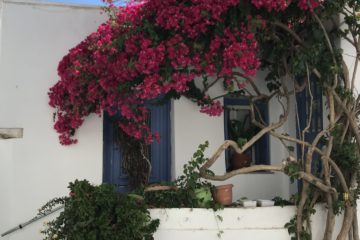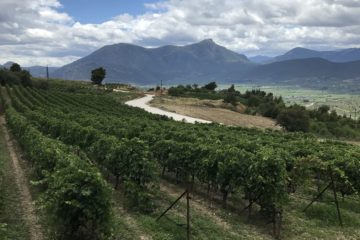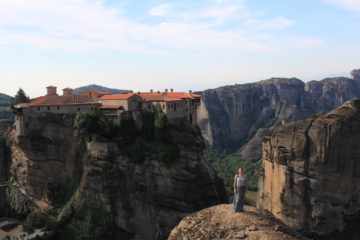The first accomplishment of our time in Xi’an was surviving our first overnight train ride (~12 hours) from Hohhot in Inner Mongolia. This time we opted for the “soft sleeper” instead of the “hard sleeper” we’d taken from Beijing to Datong, which offers distinct benefits such as being able to close the door to your little compartment and some semblance of privacy for the overnight journey. We got lucky, and instead of having 4 people in our compartment as designed, we only had one other woman with us who ended up exiting the train before our city. All in all, not bad!
When we weren’t getting lost or nearly falling down stone stairways on Huashan Mountain, we found time to enjoy several other sights of Xi’an during our several days there. Here are our highlights from the city, and my take on whether I’d recommend them to others.
Must Do
Terra Cotta Warriors
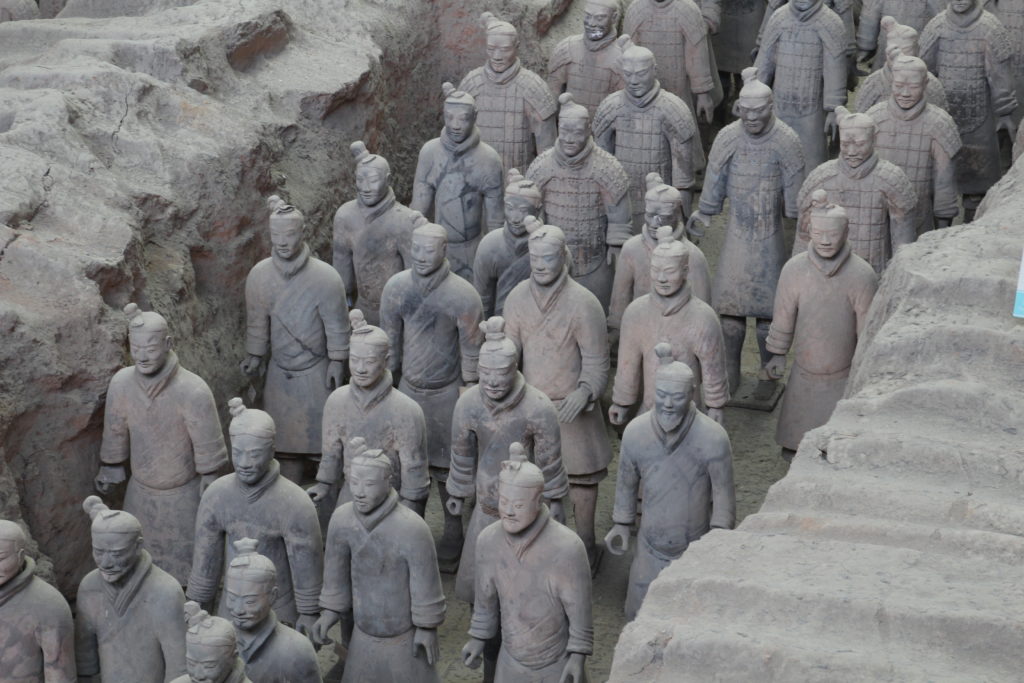
Terra Cotta Warriors
This is the number one highlight of Xi’an, and one of the Eight Wonders of the World. [Editor’s note: Naturally, this depends on what definition of “wonders of the world” is being used. With that said, it is incontrovertibly awesome and worthy of whatever list it appears on. Also, the Chinese government’s propaganda touted this as being one of the eight wonders, so who am I to fight them about it?] This army of life-size warriors made from kiln-fired clay, part of the mausoleum of the first Emperor of China, Qin Shi Huang, was only discovered in 1974 by a farmer digging a well in a pomegranate orchard and is still being excavated today. [Editor’s note: He was the first emperor because he successfully (ruthlessly?) managed to unify the 6 competing provinces that existed at the time (around 200 BC) into a single country, then subsequently named himself emperor.] It’s about an hour from the center of the city but incredibly easy to get to, given that basically every tourist does it. We hopped on a city bus that left from the main train station for only 7RMB each way (about $1).
The best thing we did here was to hire an English-speaking guide to take us around. We had seen guides for hire at lots of other sites along the way, but never figured it was worth it as English-speakers tend to be pricier. But after a few underwhelming audio-guides, and a few times assuming incorrectly that there would be English-language signs, we knew we wanted to get the full experience at Terra Cotta. We hit the jackpot here in this regard: as we were looking confusedly at the automatic ticket machines, a woman with an ID badge helpfully directed us to where we needed to go in perfect English. We thanked her and walked away, saying “oh man, I wish she could be our guide” only to have her approach us again after we bought our tickets and offer her guiding services! Her name is Cindy, and she explained that all the guides have a rigorous certification program to complete every year, on top of the English for Tourism degree she already possessed. She was really into the history of the site and was so professional, fun, and informative that we had a blast and learned a ton.
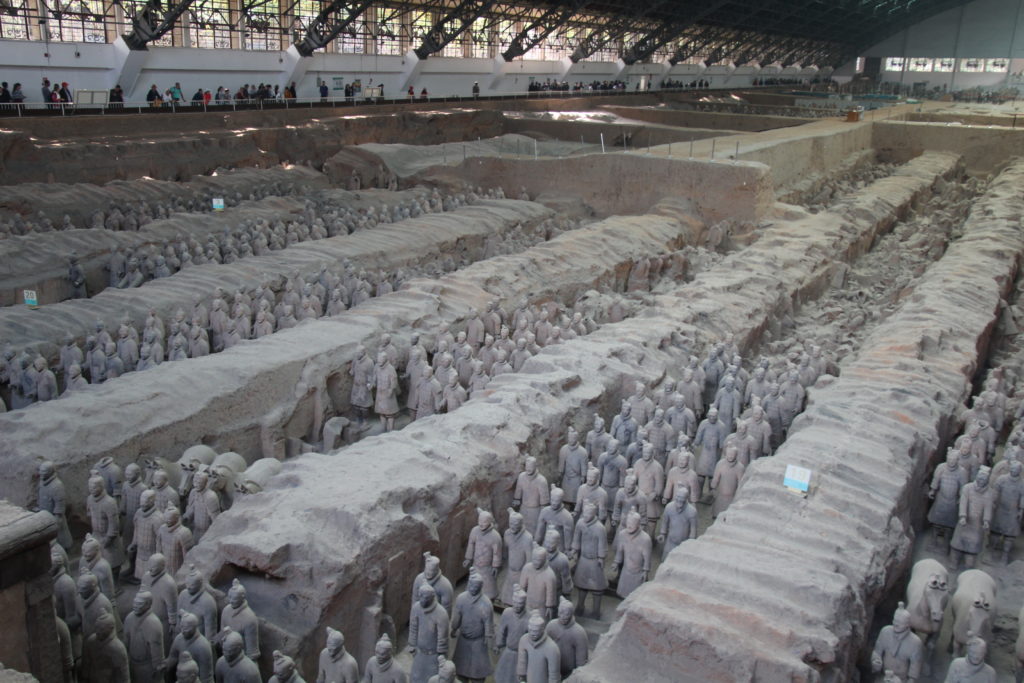
The vast scale of rows upon rows of warriors in Pit 1.
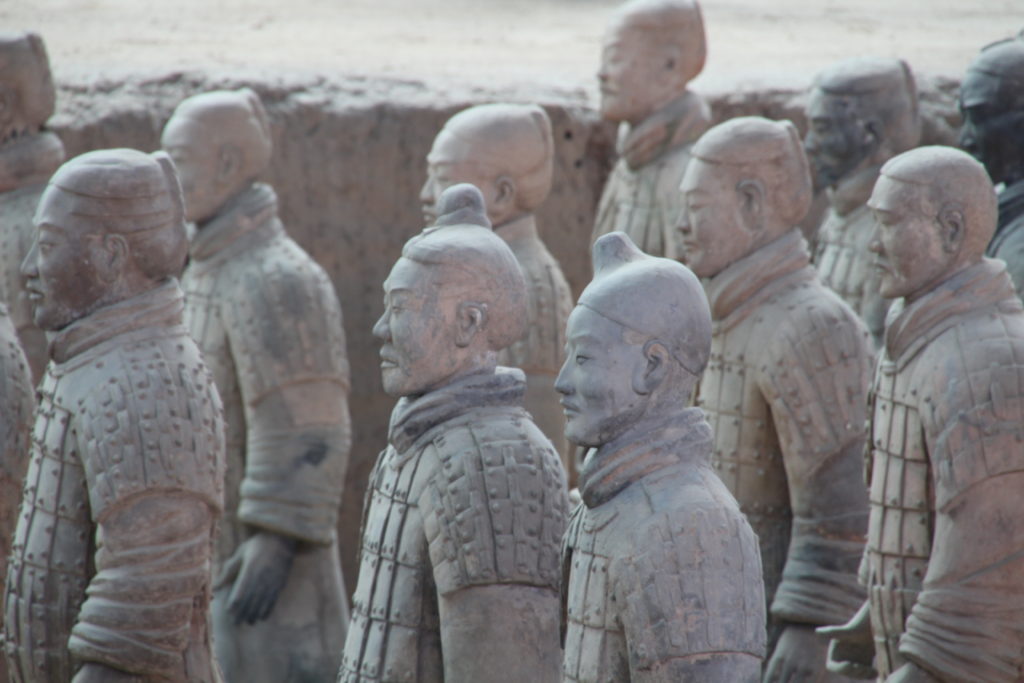
Every one is different.
The warriors themselves are impressive, as is the scale of the operation. Pit 1, the largest, is the size of an airline hangar, and the different sections are in different stages of excavation. This is the “wow” moment of the site, where you see a few thousand of them all lined up. [Editor’s note: There are ~6000 of these warrior statues in total, with the bulk of them being in Pit 1. Also, while it’s the most impressive in terms of scale, it’s actually got the lowest level of soldiers (mere infantrymen) of the various pits. It’s just got a ton of them, so it’s impressive.] Because of various wars throughout the centuries, the warriors are all destroyed and in jumbled pieces when they are first dug out. But, due to collaboration with the Germans and a sophisticated computer algorithm to put the pieces back together, they are painstakingly reassembled and put back in their original place one by one. There’s even a “hospital” at the far end where we saw archaeologists working to assemble more warriors using this method, out in the open. Very cool.
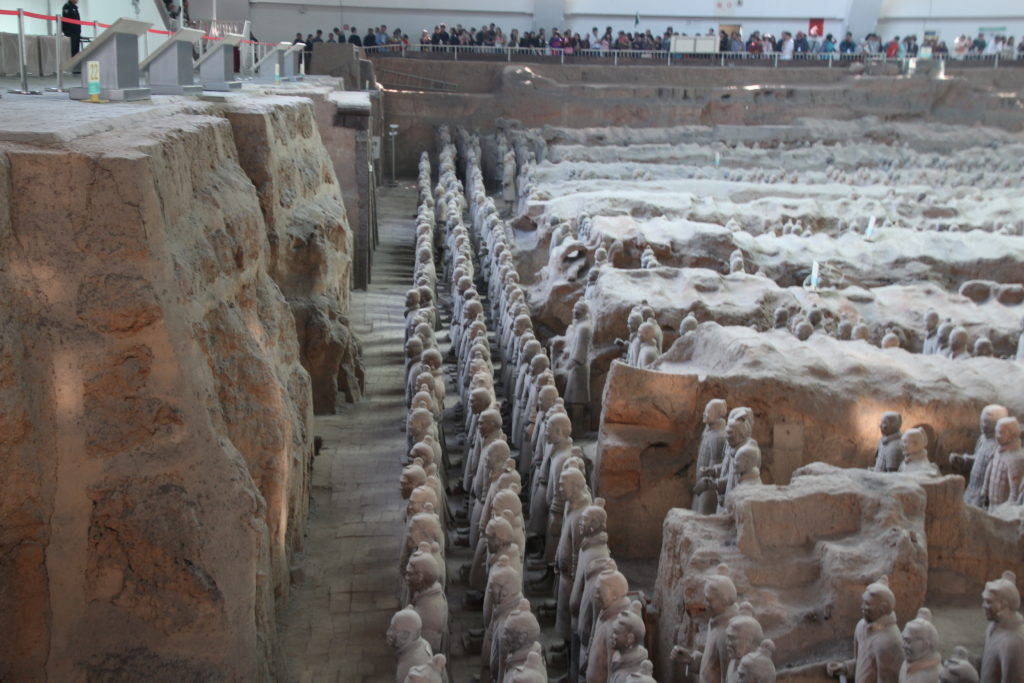
A side view of the vanguard, the first rows of warriors at the front of the army
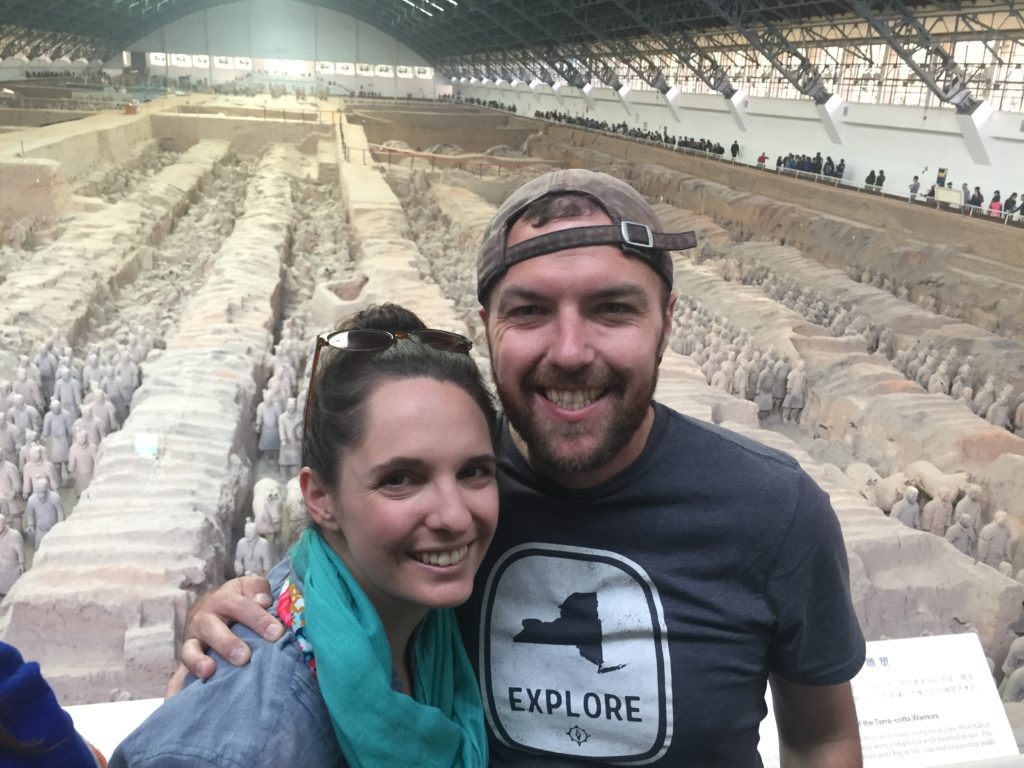
In front of the army in Pit 1
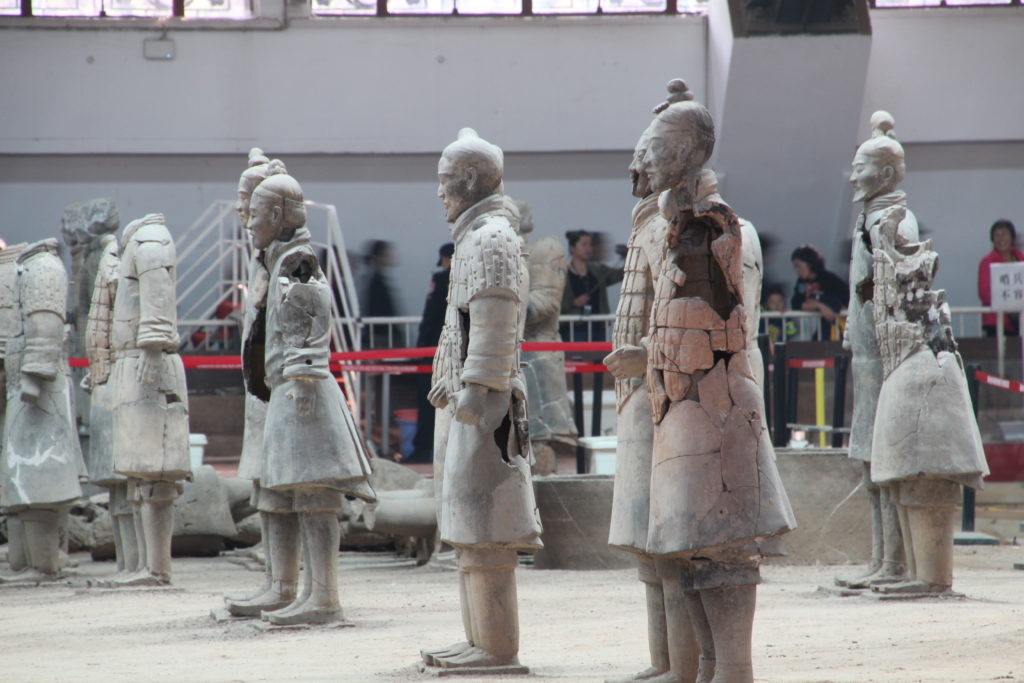
Part of the “hospital” where warriors are assembled from their broken parts
We hit Pit 3 next, the smallest, which has the headquarters where higher-ranking warriors are in a meeting room configuration. Then, in Pit 2, you see other warriors (archers and cavalry here, as opposed to the infantrymen in Pit 1), as well as a close look at several individual warriors that were on display. This is where we really got to appreciate the craftsmanship, as you can see that every detail from the hair to the tread on the shoes is impeccably done. Pits 2 and 3 are much darker and better protected, which our guide explained is because they were built well after the original Pit 1 in the 1970s after the Chinese realized how critical controlling the air, light, and other factors was to preserving the warriors. The warriors were painted with vivid colors, but oxygen and light have caused the color to be destroyed on a lot of the earliest ones to be dug up. Because the entire operation around the warriors has only been in the past few decades, you can really see the progression as the archaeologists learned as they went.
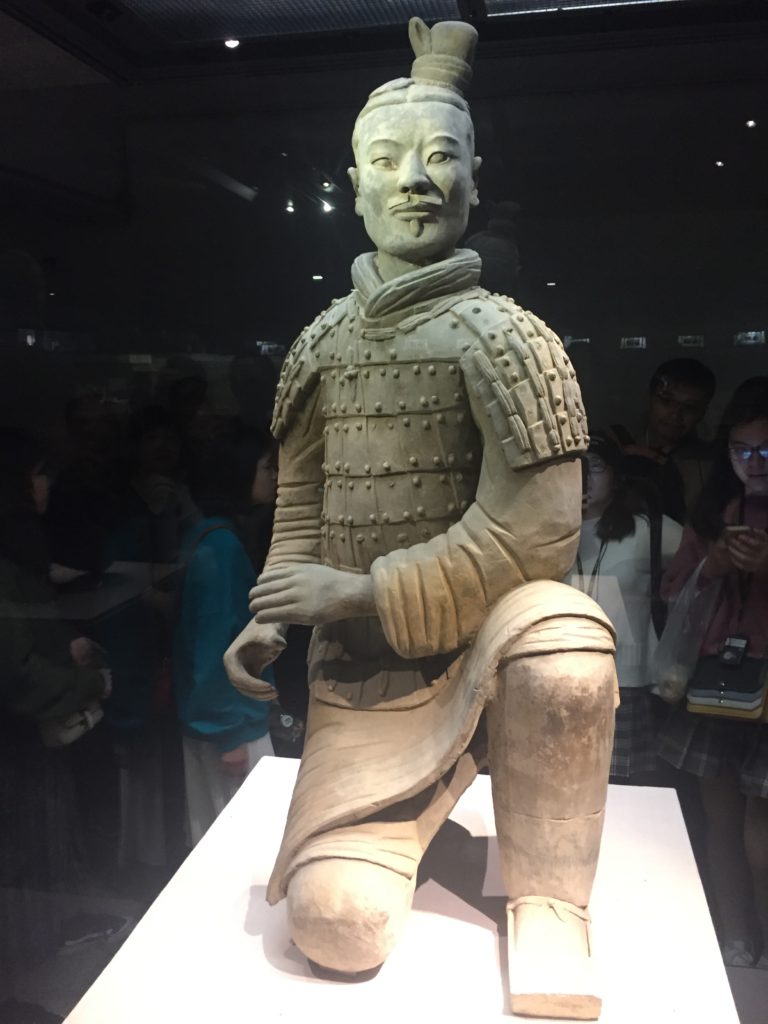
Up close with the Kneeling Archer – apparently he was the only warrior to have been found intact, and is thus the “lucky warrior”.
Finally, there’s a separate building centered around two bronze chariots that were also unearthed at the site. These are incredible, solid-bronze sculptures that include the horses, reins, driver, and chariot all at a half-size proportion. [Editor’s note: Two points. One, because these are pure bronze, Cindy joked, “That makes these the most expensive cars in all of China!” Quite clever. Second, circling back to the warriors, it’s worth noting that every single one of the ~6000 warriors has a different face/features. It’s remarkable. It is believed that the craftsmen who made the warriors made them to look like themselves and other people in their lives. Pretty incredible.]
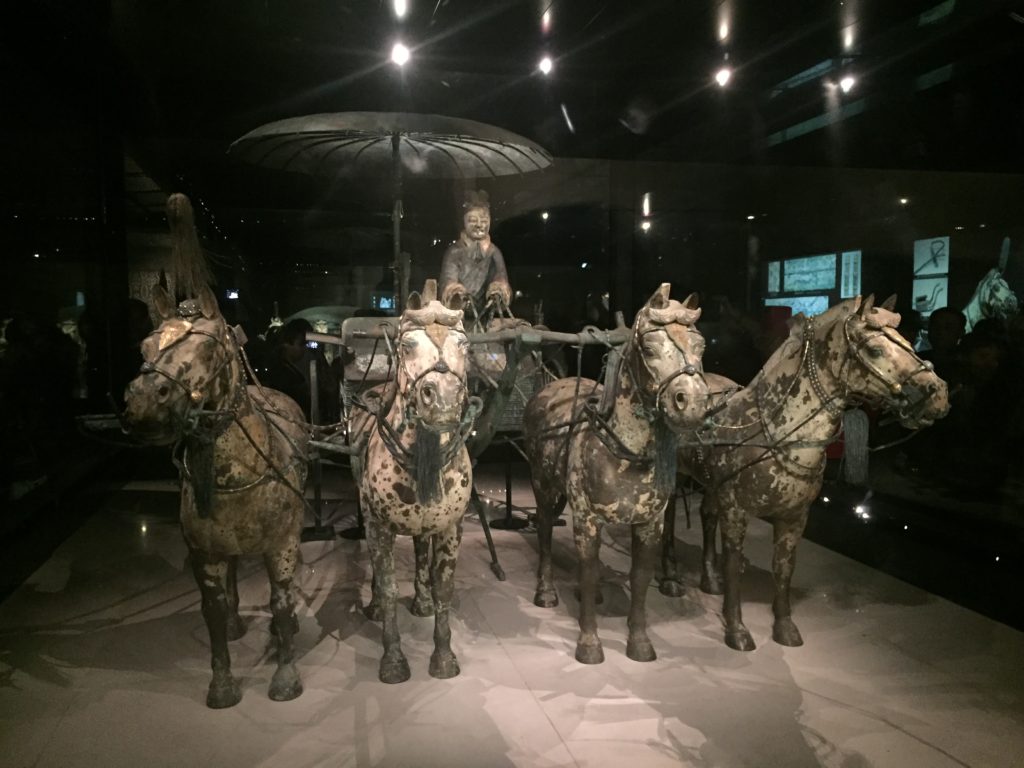
The bronze chariot
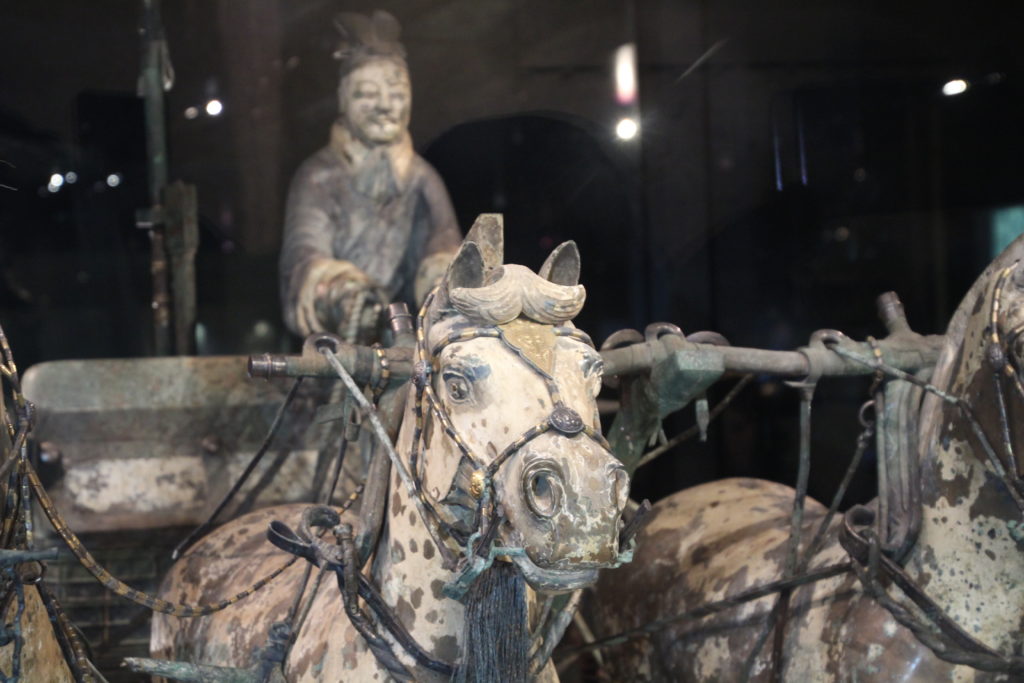
Detail of the beautiful bronze horses
Overall we toured the site for about two hours, then took the same city bus back. [Editor’s note: The raging debacle known as our Huashan Mountain journey was the day before, so we desperately needed a “win” on this day in the form of our day trip going smoothly. Thankfully it did. I can’t imagine the carnage that would’ve occurred if it hadn’t.] To get from the main ticket office to the bus parking lot, you have to walk through a gauntlet of vendor stalls and restaurants, selling everything from pomegranate juice to small terracotta figurines to entire animal pelts. We left totally satisfied, feeling like we’d gotten a ton of interesting context and a real appreciation for the process the Chinese have been going through to preserve and excavate the site. This was a great half-day excursion, and definitely on the must-do list when in the city! [Editor’s note: Though it feels totally clichéd to tout visiting the Terra Cotta Warriors as an awesome experience, it really was a highlight of our trip thus far. It was impressive and fascinating. Well worth our visit to the city.]
Bike the City Wall.
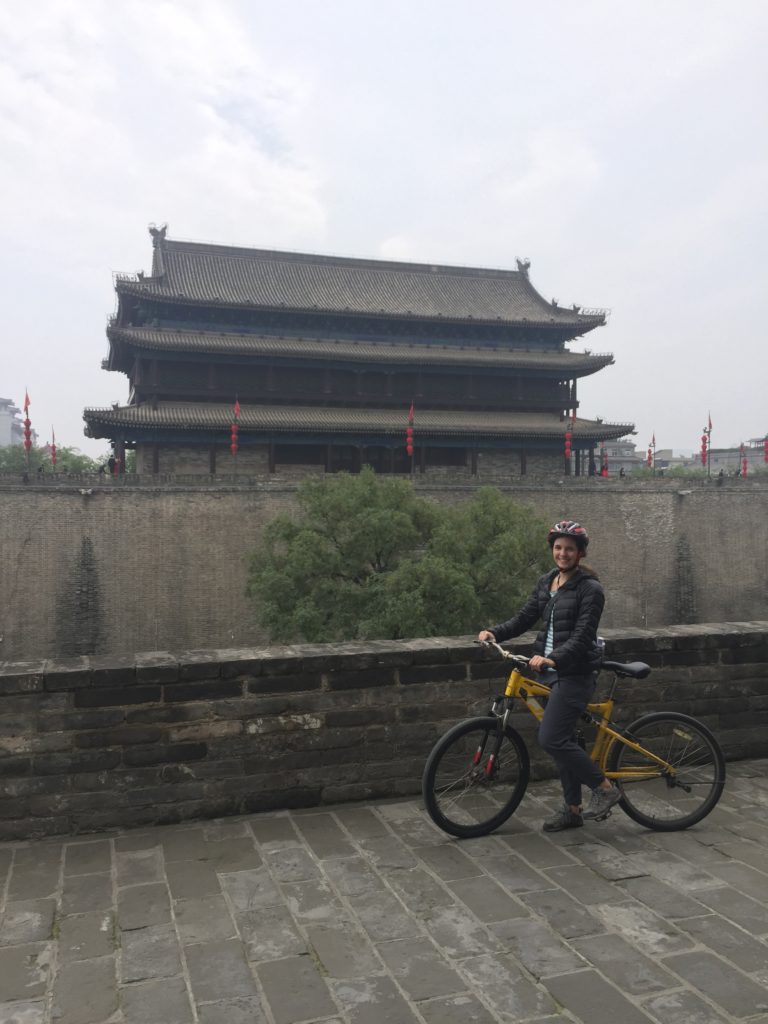
In front of one of the many towers along the city wall.
The center of Xi’an is surrounded by a huge, beautifully restored city wall and moat. Gates on the four sides provide entry and exit points, as well as helpful landmarks when navigating the city. Although Xi’an itself sprawls much larger, the city within the walls feels small and manageable, and is where we spent all our time. The wall itself is about 14km all the way around, so while you can walk along it, the best way to do the whole thing is by bicycle. After you enter the wall and climb the stairs to the top, you can rent bikes near any of the gates and return them at any gate as well (if you don’t want to do the whole thing).
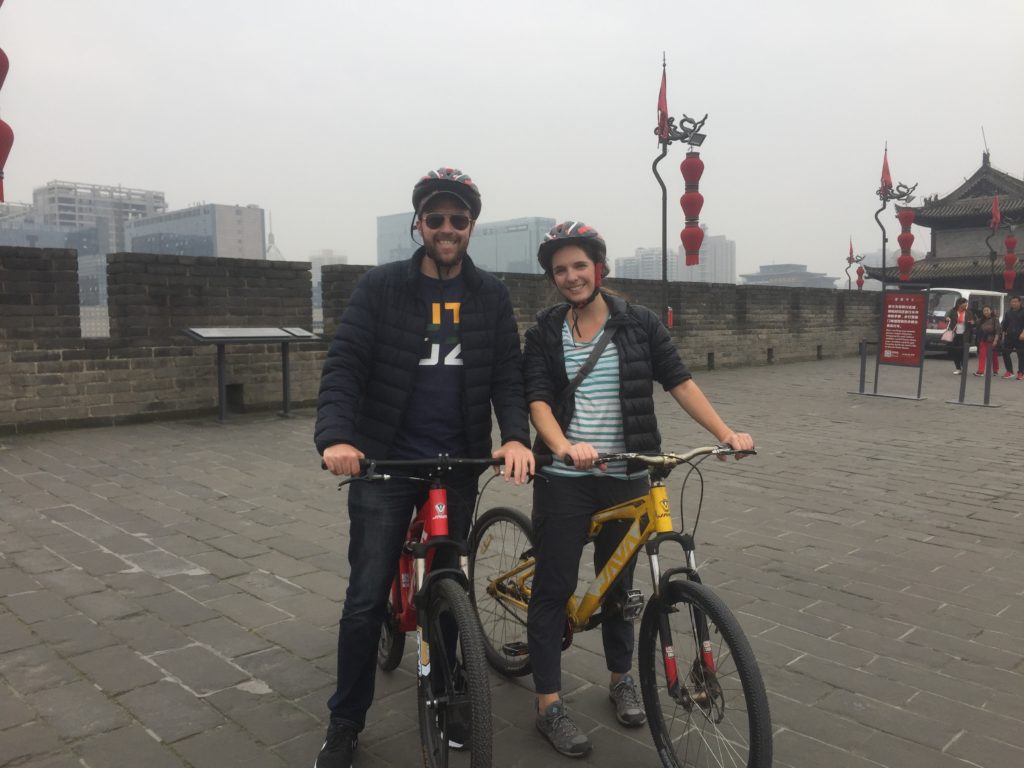
At the end of our 14km wall circuit
I really enjoyed biking around the wall, as it was a chance to stretch our legs and do something a little bit active while not too strenuous – while covered in uneven cobblestones, the wall is flat. We could stop along the way to look at the watchtowers perched on the corners, or peer down into the temples or city streets we were biking above. There were well-done, interesting placards (in English too!) talking about the defense strategies employed during siege warfare during the many wars the wall has seen. [Editor’s note: I think Jess is slightly underselling how interesting this information was. In addition to having descriptions of all the different ways that enemies would try to attack the walled city, the placards provided pictures of the devices and anecdotes about how these methods would be thwarted. So cool! China usually sucks at making interesting placards at tourist sites, but this is a definite exception.] It also wasn’t crowded at all, whether due to the gray, drizzly weather or the weekday timing I’m not sure. I’d definitely recommend it as a great way to see a lot of the city from a different perspective. [Editor’s note: I completely agree. It was very worthwhile and nice to stretch our legs. We probably didn’t need to bike the whole thing (it got redundant and tiring at a certain point), but doing at least a portion of it was a good use of one our mornings in the city.]
Muslim Quarter
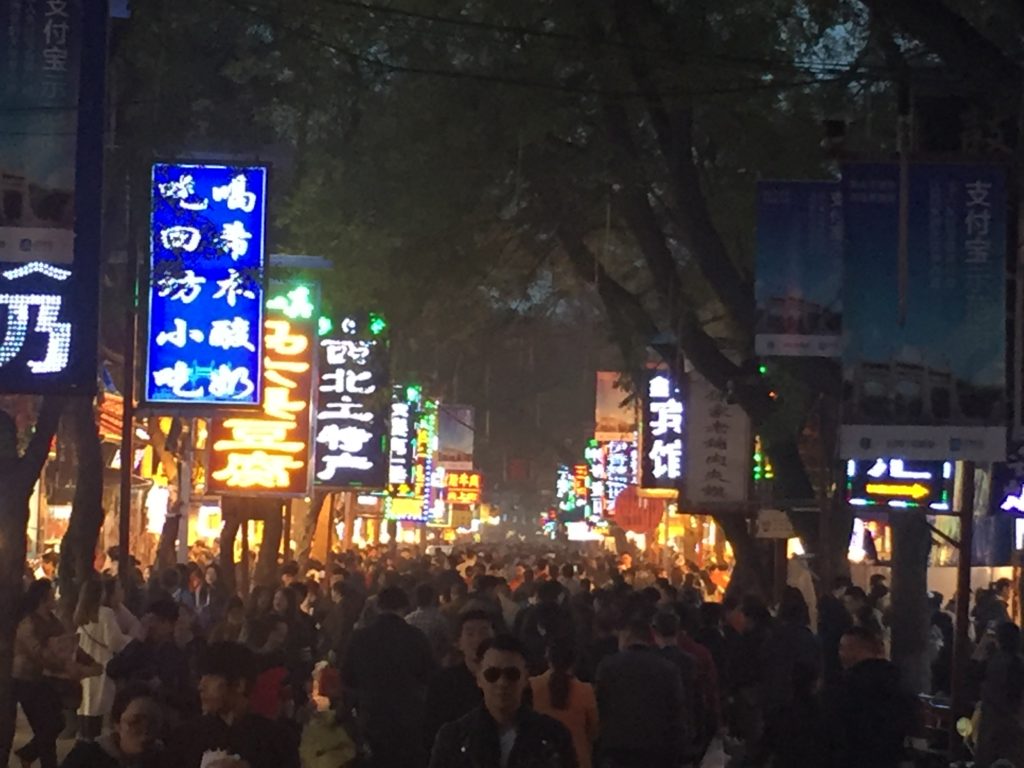
Looking down the main street of the Muslim Quarter at night
This area is near the center of the city and contains mosques, restaurants, and an incredible array of food stalls and souvenir vendors. From one street to the next, you go from a dark, unimpressive street to an explosion of lights, people, and smells. We had a fantastic time haggling for souvenirs and trying different foods from the stalls, cobbling together a meal from several different spots. It’s overwhelming in a great way, and an absolute must for any visit to Xi’an. [Editor’s note: Again, I can’t find fault with Jess’s characterization. Definitely one of the highlights of our trip thus far. We’ll probably have a more extensive blog post about Chinese cuisine generally soon where we’ll talk more about this, so hold tight until then for more information.]
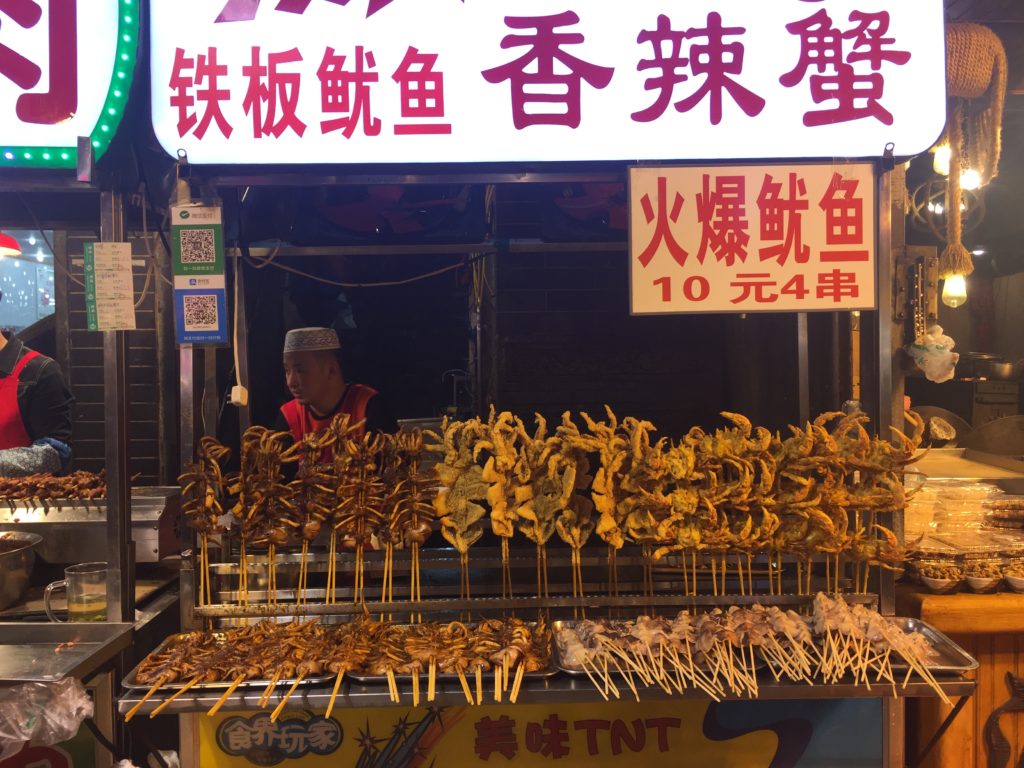
A stall of various skewers in the Muslim Quarter
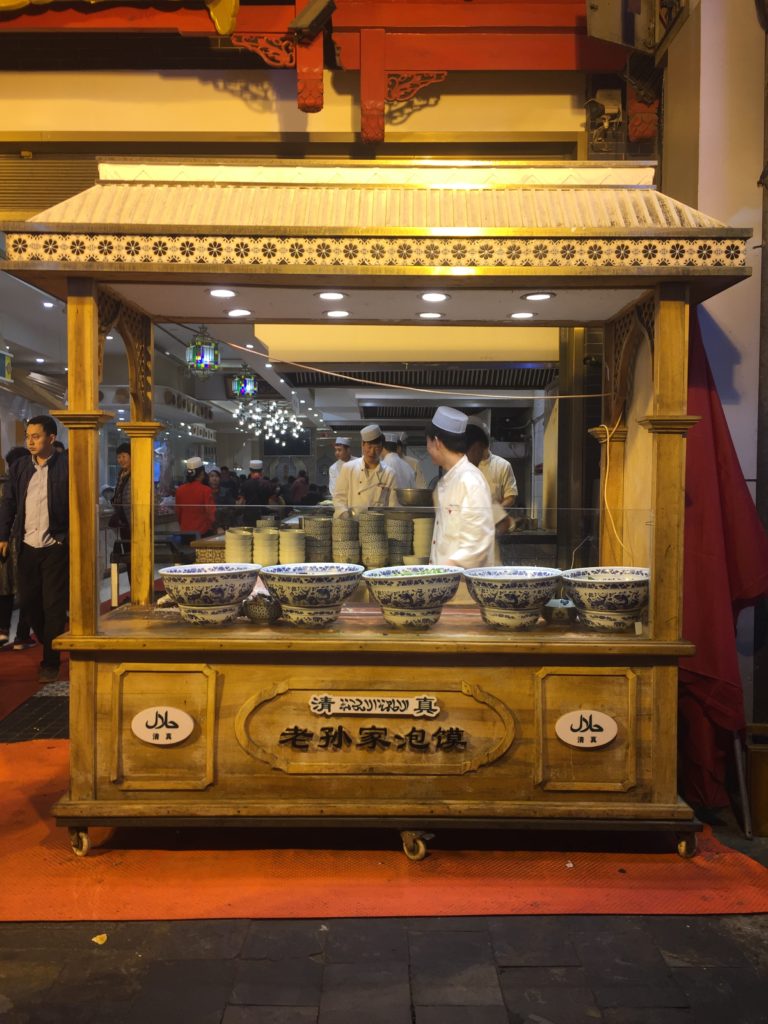
Food stall, Muslim Quarter
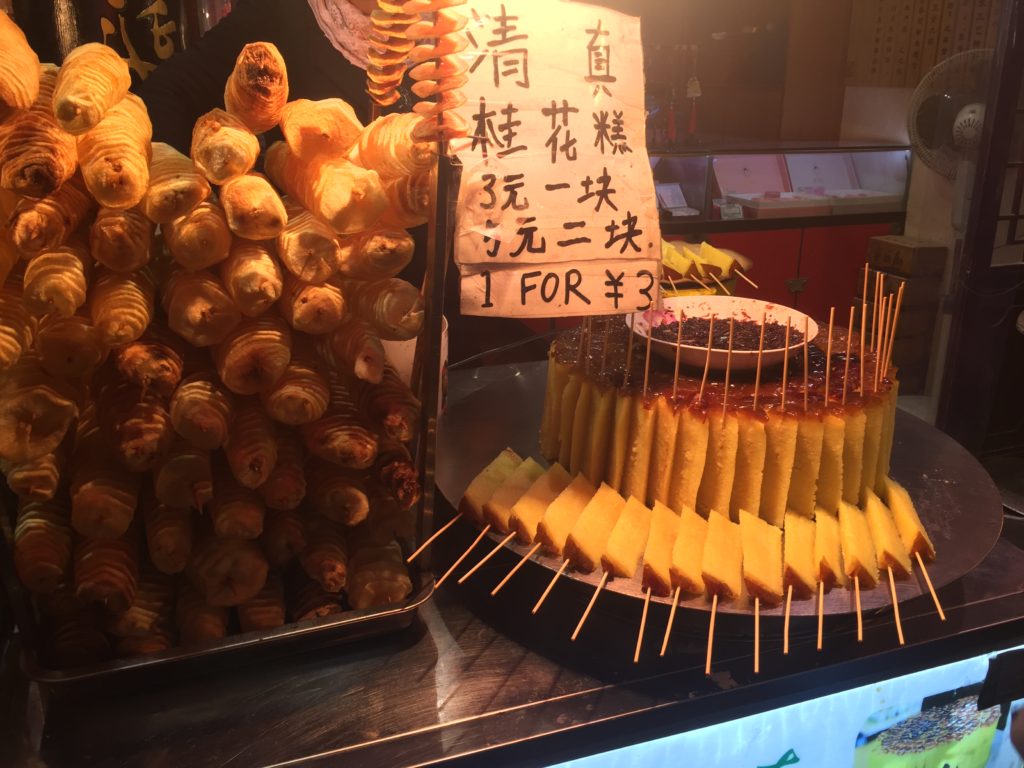
Yum. This was some sort of osmanthus (?) sweet rice cake.
Probably Should Do
Huashan Mountain.
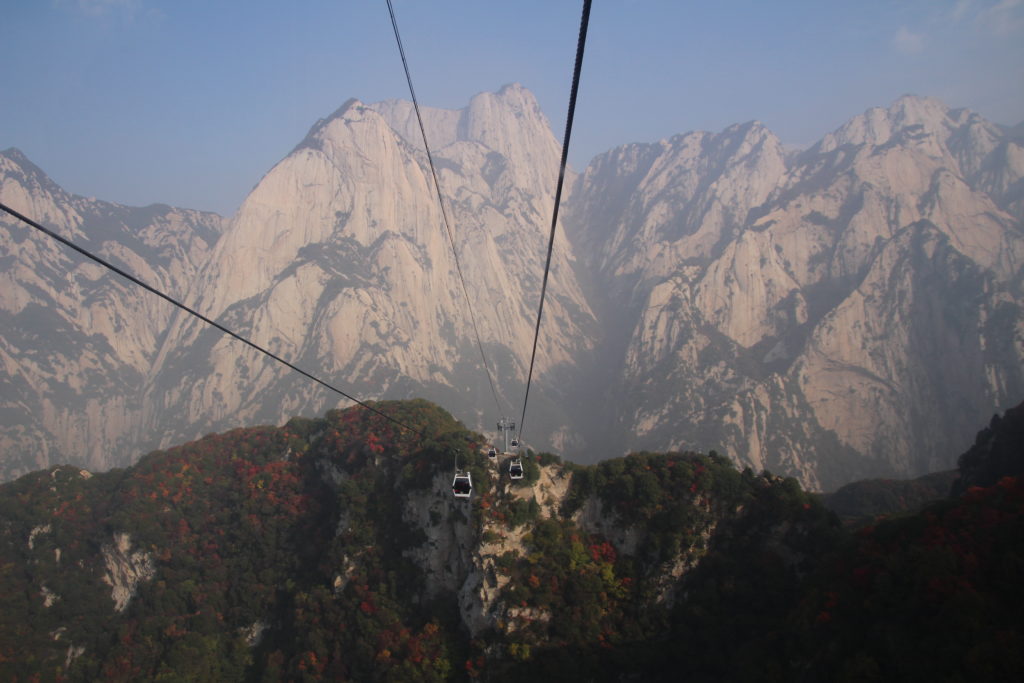
How’s that for a cable car view?
Since we already dedicated a whole post to this one, I’ll leave the details out here, but I definitely think if you have an extra day to spare in decent weather, a day hiking the mountain is a great choice. [Editor’s note: I think Jess is being too generous here. It fits firmly in the “maybe” pile for me. I’d be more interested in it if we weren’t doing any other hiking in China, but we could’ve probably skipped this (in my humble opinion) since we’ll be spending several days at the majestically gorgeous Zhangjiajie.]
Forest of Stelae Museum
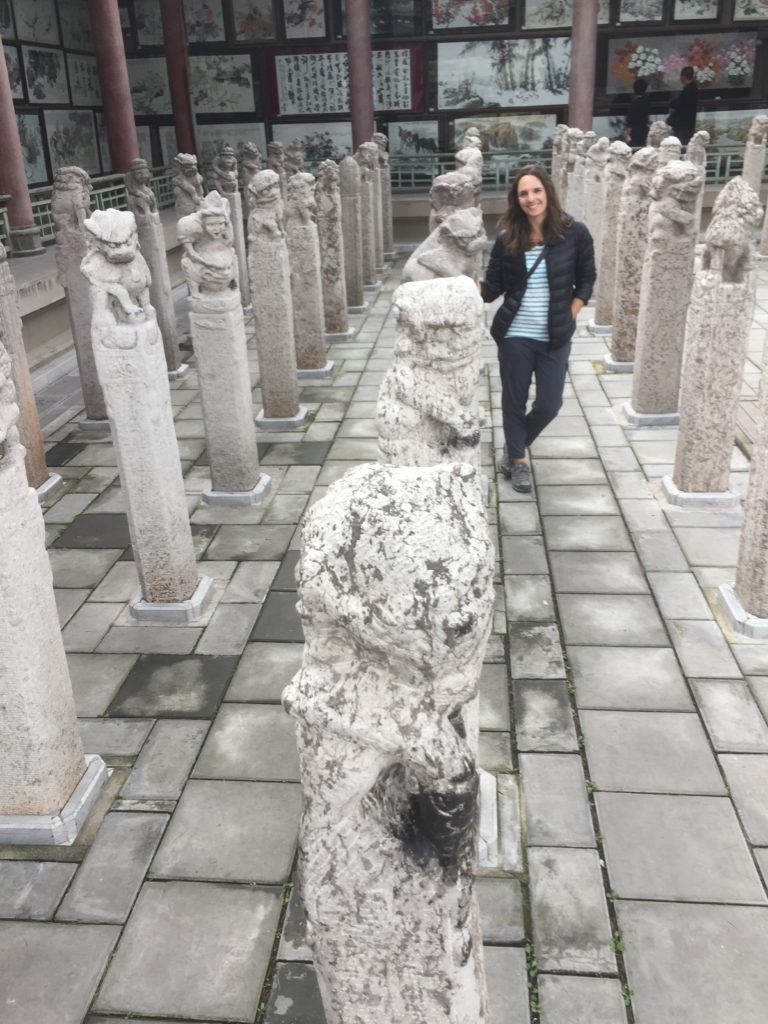
Hanging out with a whole bunch of ancient stone hitching posts at the Beilin Museum
Also called the Beilin Museum, this is really easy to pair with biking the city wall as it’s right near the South Gate in short walking distance. Stelae are ancient stone tablets inscribed with text or illustrations, and this museum has over 1000 of them from all different times throughout history.
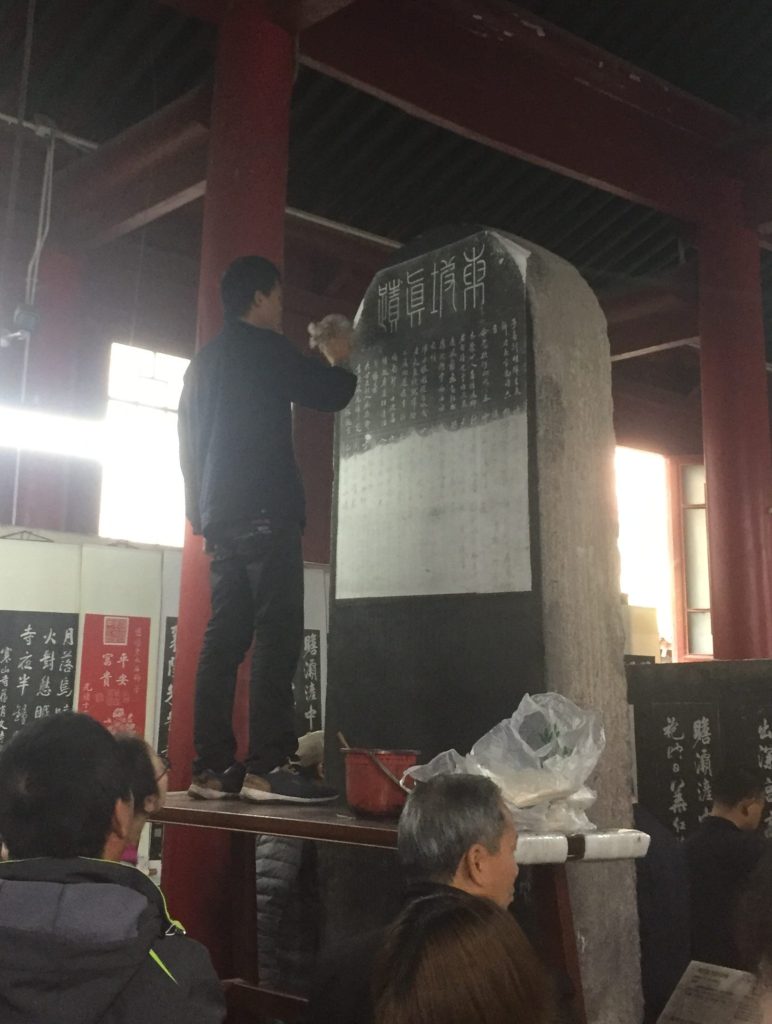
A museum employee makes a rubbing of one of the stele
While a lot gets lost in translation, since of course we couldn’t read any of the Chinese inscriptions, it’s incredible to think about the age of these tablets (some a few thousand years old) and the effort and precision required to carve them. We also saw some museum employees creating rubbings, where they put paper over top of the tablet and lightly press ink over it to make a copy. [Editor’s note: This was the primary purpose of the stelae when they were created – to facilitate making copies of important texts (e.g., all writings of Confucius) so that they could be widely accessed. It was like a pre-printing press method for disseminating writings, which is cool.] There’s also a cool sculpture gallery, and the whole museum is housed in a Confucian temple. Overall I enjoyed the museum and would recommend it if you have a few hours free. [Editor’s note: Yeah, I guess that’s right. If you can avoid disappointment over the fact that you’re unable to read each stele and just appreciate that they exist, then it’s a cool and interesting place. It won’t knock your socks off, but it’s solid.]
Maybe Do?
Giant Wild Goose Pagoda and fountain show
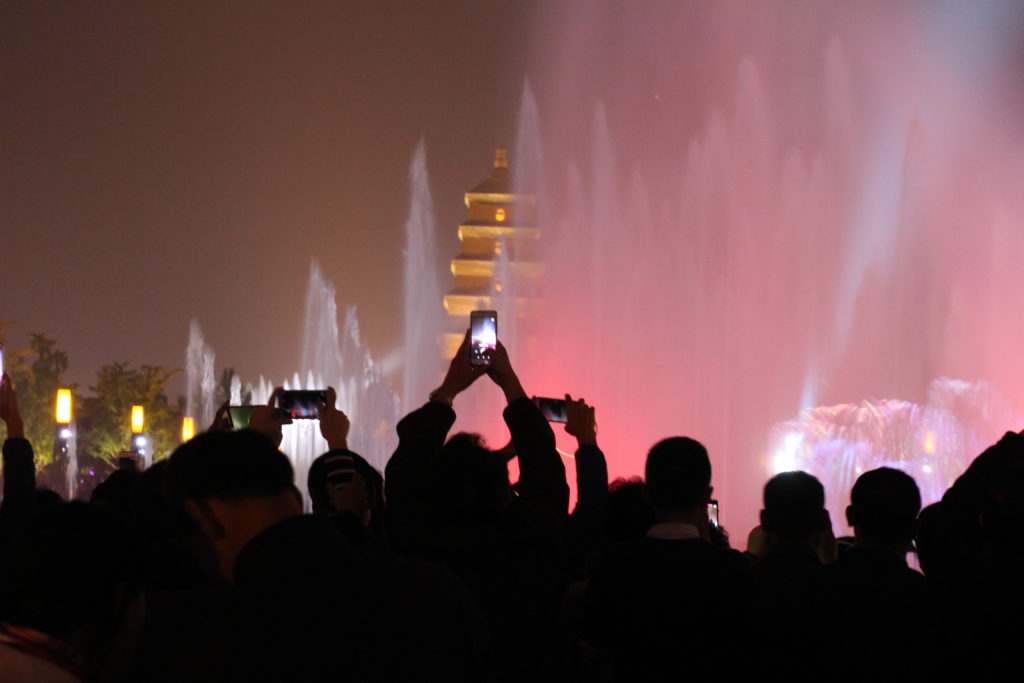
Watching cell phones watching the fountain show in front of Giant Wild Goose Pagoda.
This pagoda is one of the more famous ones, but somehow I didn’t quite appreciate the appeal. It’s located outside the city walls, though still accessible by metro, in an area that has is full of restaurants, tourist shops, and even go-karting and karaoke spots. We didn’t go into the pagoda itself, instead choosing to time our visit to see the gigantic water fountain and music show (the largest one in Asia, similar in nature to those at the Bellagio Hotel in Las Vegas) that happens every evening. While pretty and impressive given how big the fountain actually is, the music was all classical Chinese and we had a hard time getting too engaged (unlike the throngs of people who lined the fountain, cellphones aloft the entire time). Maybe I’m missing some of the historical significance, but overall I’d give it a meh. [Editor’s note: Agreed. I’d skip it. The pagoda was pretty, but it was all otherwise pretty underwhelming.]
Little Wild Goose Pagoda
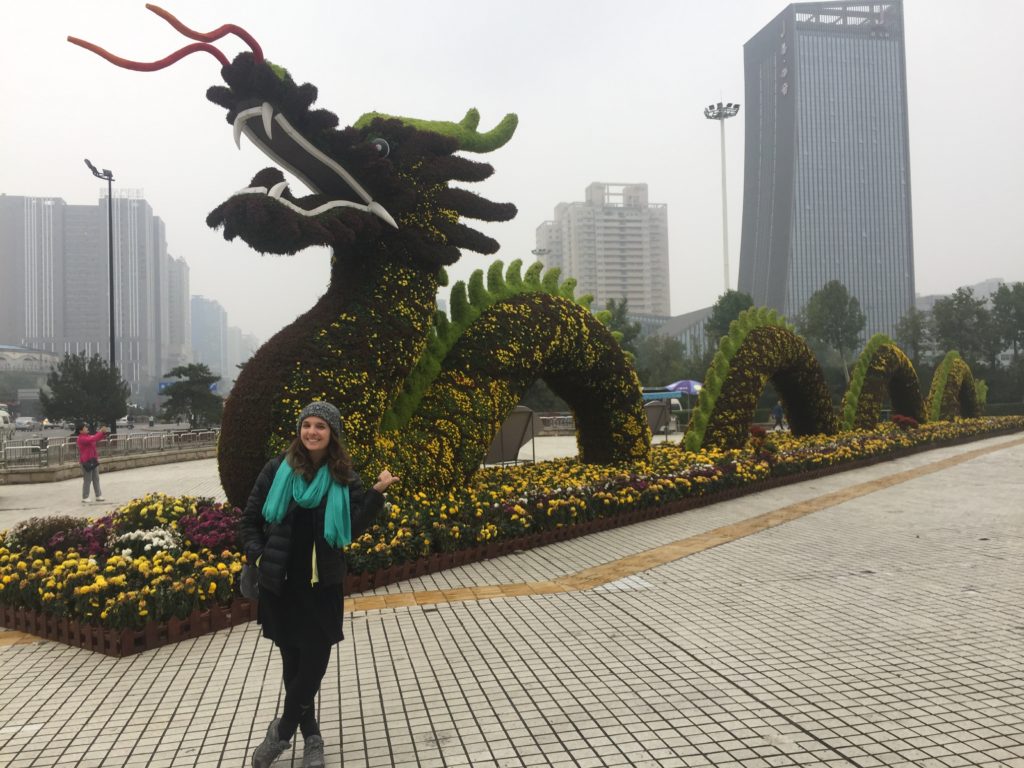
We didn’t take any pictures at Little Wild Goose Pagoda, but this is a cool plant-dragon we saw on the walk from the metro!
We actually didn’t even plan to go to Little Wild Goose, but it was supposed to be right next to a large antique market we wanted to visit. We didn’t end up finding the market at all (apparently it used to be there but isn’t any more?), so instead we wandered the grounds of Little Wild Goose Pagoda. It’s peaceful, with nice pathways, streams, and scenery, and the best part is that the grounds are free (just show your passport for an entry ticket). Again, we didn’t end up going inside the pagoda, opting just to walk around instead. It was a nice area to walk around, and I can’t imagine it taking more than an hour or so, even to do more than we did. [Editor’s note: It’s a bit out of the way, but the grounds were pretty and free. Hard to argue with either of those traits in a tourist site.]
One additional highlight of our time in Xi’an unrelated to the sights above was the food. We stumbled into a random restaurant when trying (and failing) to find another we’d heard about, and ended up ordering some of the best food of our trip almost entirely by accident. [Editor’s note: This was a recurring theme of our time in Xi’an. We tried to rely on Jess’s new best friend, Lonely Planet, for recommendations, but all of them were either closed at the moment or permanently shuttered. Not cool.] We loved it so much that we went back on a different night and ordered the exact same three dishes again! I don’t think we’ve ever done that before, even in America. We also found a cool street entirely lined with bars, with everything from live music to sports-bar style pubs to fancy lounge-style cocktails.
Xi’an held a lot of frustration for us – we tried and failed to find a number of things we’d read or heard about, we had a ridiculously hard time getting to Huashan Mountain, and the weather was cloudy or rainy a lot of the time. However, overall I really liked the city itself. Inside the city walls felt small enough to really be able to get to know, the subway system was great, and I felt comfortable with my ability to move around and get where I needed to be. That’s a contrast from Beijing and the other spots we’ve been so far, and a nice feeling when everything is so foreign!
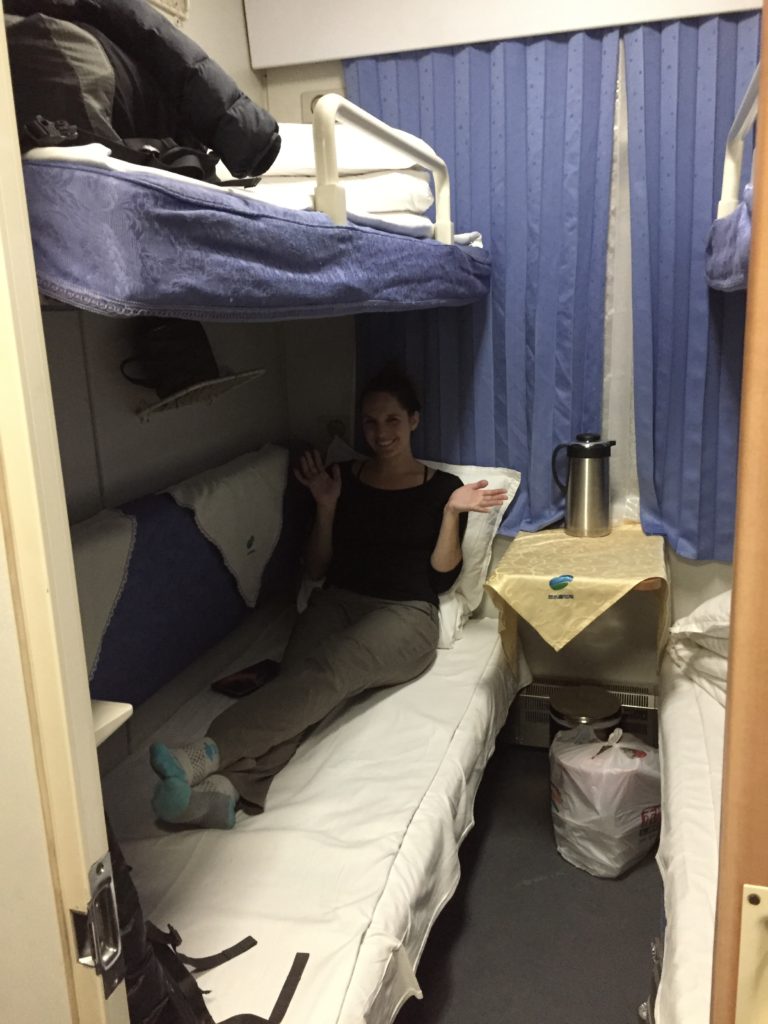
Pure luxury in our soft sleeper car.
